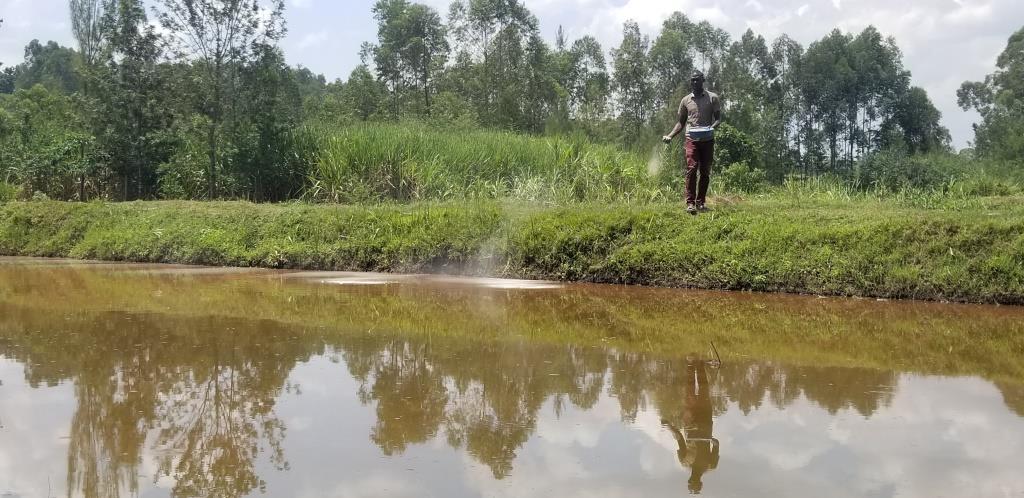
By MN Reporter
While most classmates rushed to seek employment after graduating in 2019, Maurice Odhiambo Shikuku, 29, took to agri-business, a decision he has not regretted.
Shikuku said he graduated with a diploma in Procurement from Kisii University in 2019 and has never applied for formal employment.
“Getting employment is always elusive so i stuck with fish farming and agriculture could boost my family income to support my wife and three children, I concentrated on it fully and have no regrets,” Shikuku said.
When Migori News visited him at mid-morning, the farmer was feeding fish at one of his ponds. He feeds the fish daily at 10am and 5pm, a venture
“I started with a standard pond measuring ten-by-ten feet in 2013 along river Oyani on a three-quarter of an acre family land along river Oyani in Migori county, but sadly it was swept away by floods,” he said.
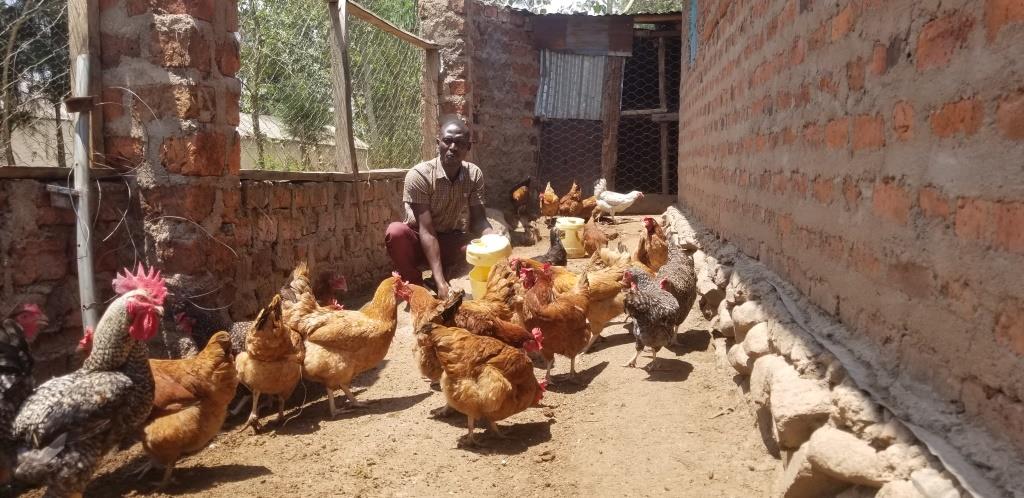
He lost all 800 tilapia fingerlings which made him suffer 100 per cent loss on Sh45,000 he had invested in labour, feeds and construction of the pond.
Shortly afterwards he joined Double Edge Environment Change Group of youths from Oyani area to supply eucalyptus, pine and bamboo tree seedling to the Migori county government for environment upgrade project which saw him earn Sh600,000.
With the money he fortified his fish pond and built two others ponds measuring 30-by-50 feet and 20-by-30 feet which he stocked with 1,200 and 1,000 tilapia fingerlings respectively and added 200 catfish.
“Fish is harvested twice a year, after every six months. I feed them fish starter for two months before I move to growers mash until they are ready for market,” he said.
A pond can get him Sh63,000 for catfish and Sh240,000 for tilapia which he always sells for hotels and institutions which is in addition to local ready market some who come to his farm.
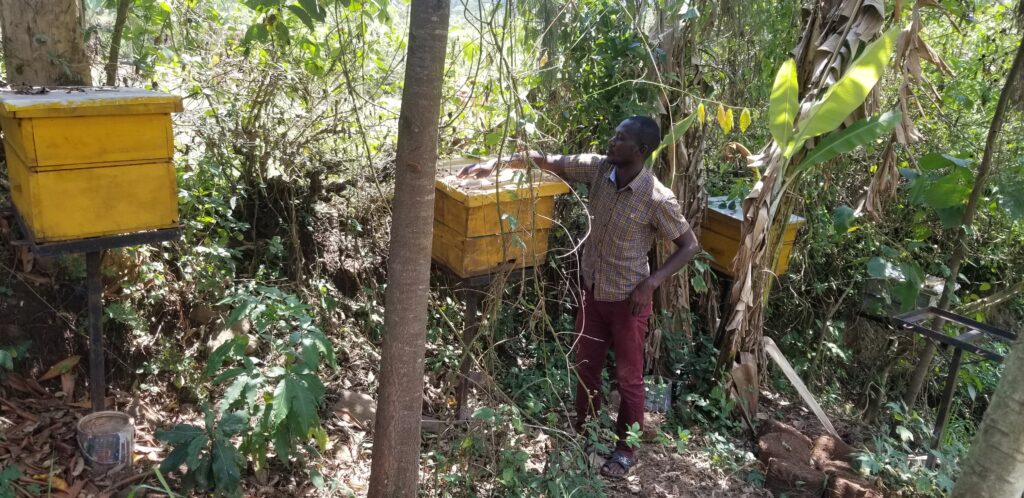
How to build a pond and maximise profit
“There are two types of fish ponds, first one is built using a dam liner or concrete on any type of soil and a second one which is fed by underground or river water in swampy area. I work on the second part because my parcel of land is swampy,” Shikuku said.
To build a pond, a farmer should first sample the soil type and topography of the land to ascertain surface runoff which can silt ponds and risks of flooding for stock to be swept away.
“A standard pond measures ten-by-ten feet and while digging the deeper end should be about 4.5 feet lower which is often the lower side of a slope, and the shallow end on the other side is 3.5 feet,” Shikuku explains.
After digging the pond, fill it with water three weeks to stocking then add agricultural lime to kill insects and other pests in the water.
“In a standard pond (10-by-10 feet) you add a half a kilo of normal commercial fertilizer to help in building planktons and algae which are fish feed. By the end of three weeks the water will turn greenish ready for stocking,” he explained.
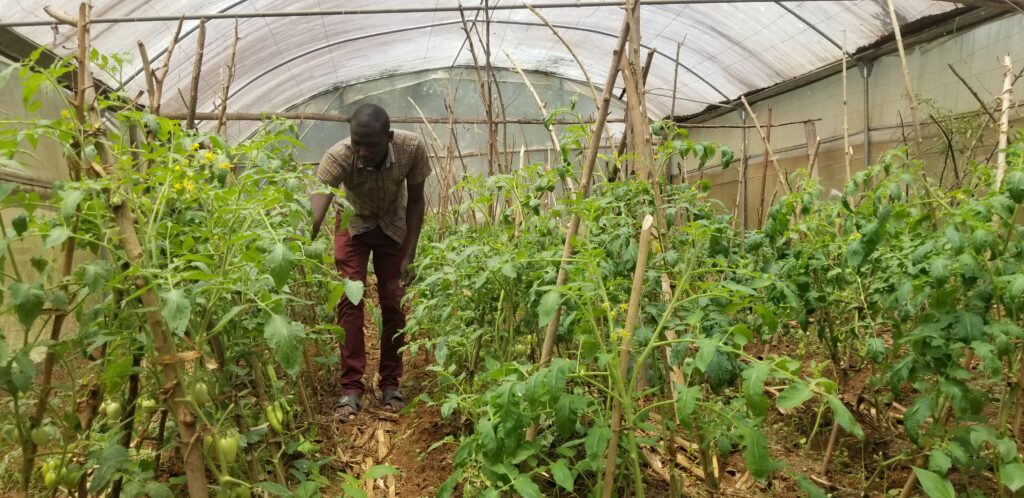
Fingerlings always come in tight polythene bags and a farmer is advised to sink it in water first before opening it.
“If your fingerlings are mono sex, all are either male or female, then feed them after three days. If they are both female and male then started feeding after three hours,” Shikuku explained.
He said fish is best farmed alongside chicken farming, which he does as chicken waste placed in gurney bags and dipped in the ponds help in algae and plankton formation.
“The gurney bags containing chicken waste are place in two opposite sides of the pond away from any overflow point and feeding done in the two other areas without the bags,” he explains.
He said the chicken wastes helps in propagating planktons, a key fish feed which give them a healthy gills and turns the water dark which prevents predators like fish eagles and cats from stealing.
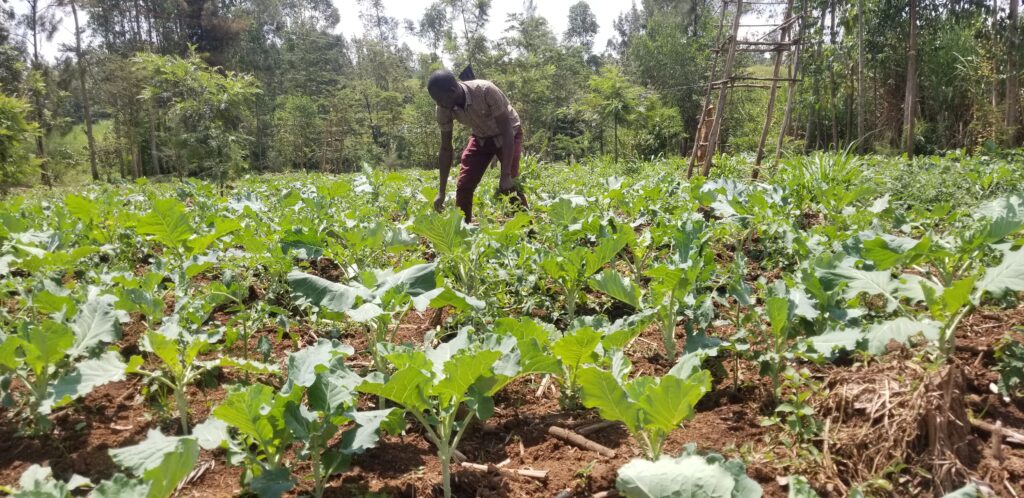
“A fish stocked by both male and female tilapia takes time to mature and after six months the biggest fish can cost Sh120-150 since they start reproducing almost immediately and the pond gets overstocked,” Shikuku explains.
A pond with a mono-sex stock can see a fish fetch Sh600 as they are bigger in size which is better for sales.
“A plan to be able to sell at least 3,000 fingerlings in two weeks as we are currently sourcing them from Kisumu city, a fingerling costs Sh10,” he explained.
To keep costs down, Shikuku said he uses fresh water shrimps locally called Ochong’a, roasted soybeans, sunflower seedcake and maize to formulate feeds.
He said demand for fish has been high, and to supplement his income he has diversified into pig farming, bee keeping, poultry farming, manages a vegetable garden and runs a poultry venture.
According to Kenya Marine and Fisheries Research Institute (KMFRI), the fisheries and aquaculture sector contributes about 0.8 per cent of Gross Domestic Product (GDP) and directly employ over 500,000 people and supporting over two million people indirectly.
Kenya, however, has far greater capacity for fish farming, with over 1.14 million hectares potentially available to enable a production capacity of over 11 million tonnes per year.


That’s my bro kudos for the good work